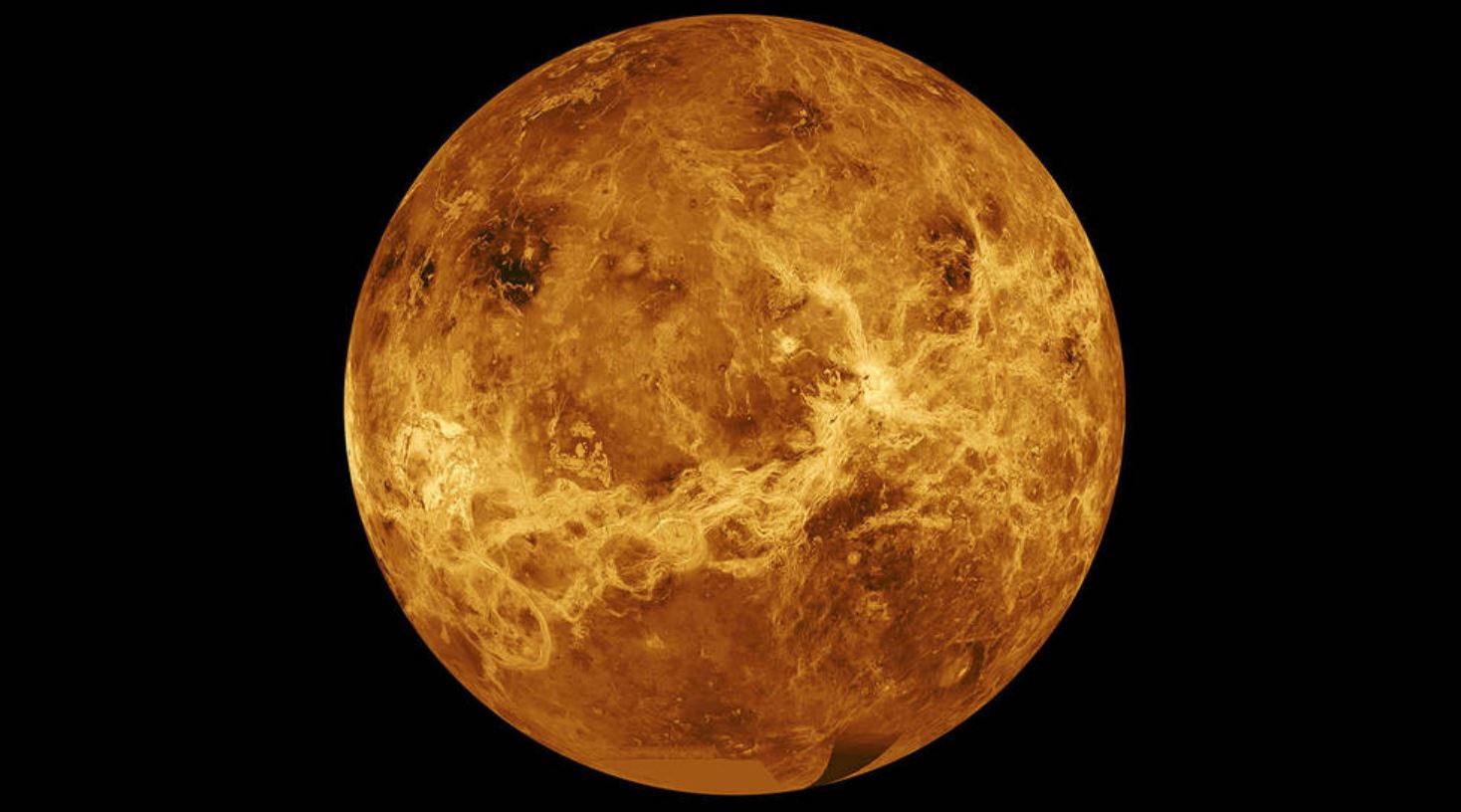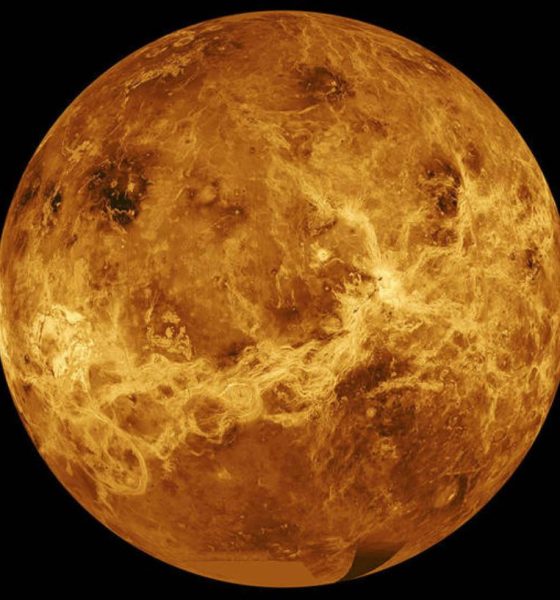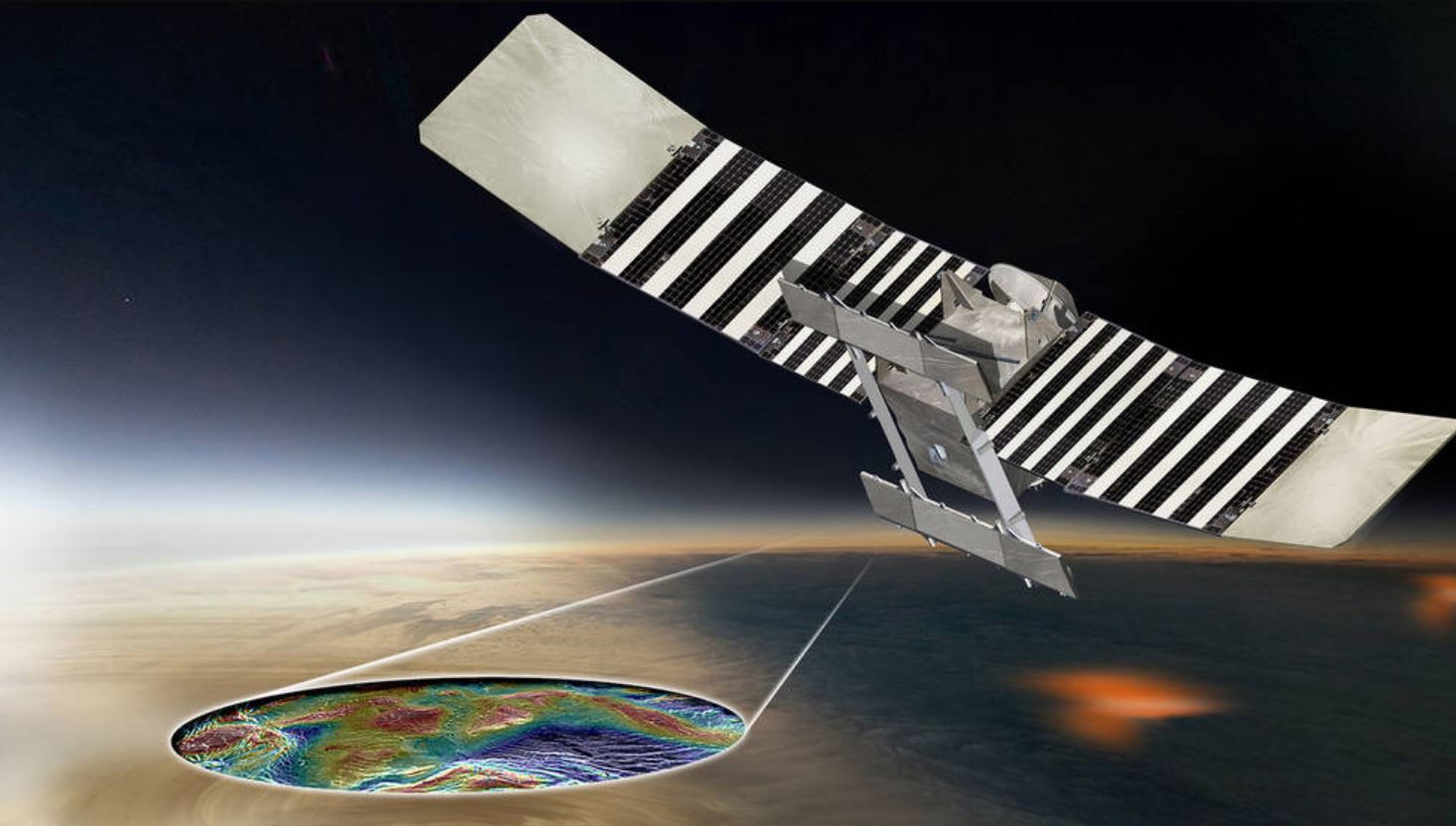

News
Mars has competition from Venus after new study shows signs of life
NASA and SpaceX are simultaneously planning their trips to Mars and the Moon, but a recent study published in Nature Astronomy has brought a different planet into the running for a new near-term exploration mission: Venus.
A team of scientists led by Dr. Jane Graeves of Cardiff University in the UK just announced the discovery of phosphine in the clouds of Venus. This rare molecule is made either industrially or as a byproduct of microbes that live in oxygen-free environments, meaning there’s serious evidence that life may exist on our sister planet.
“This was an experiment made out of pure curiosity, really,” Dr. Graeves detailed to the Royal Astronomical Society. “I thought we’d just be able to rule out extreme scenarios, like the clouds being stuffed full of organisms. When we got the first hints of phosphine in Venus’ spectrum, it was a shock!”
With NASA’s 2020 Mars Rover Perseverance on its way to do some astrobiological science on our red neighbor, this new finding on Venus looks to now have some high-level advocates for prioritized exploration.
“Life on Venus? The discovery of phosphine, a byproduct of anaerobic biology, is the most significant development yet in building the case for life off Earth,” NASA Administrator Jim Bridenstine tweeted about the news shortly after its publication. “About 10 years ago NASA discovered microbial life at 120,000ft in Earth’s upper atmosphere. It’s time to prioritize Venus.”
https://twitter.com/JimBridenstine/status/1305598182571810822
Planetary scientist Paul Byrne of North Carolina State University echoed this same sentiment in a quote published by The New York Times. “If this planet is active and is producing phosphine, and there is something that’s making it in the Venus atmosphere, then by God almighty, forget this Mars nonsense,” Byrne opined. “We need a lander, an orbiter, we need a program.”
Similar to thinking about Mars’ ancient past being filled with more Earth-like components such as water bodies (or perhaps not), Venus is thought to have been the home to lakes, rivers, and oceans before a runaway greenhouse effect made it into the hellish landscape it is today. This thinking has partly lead to speculation about the possibility of microbes migrating or developing in the clouds of the planet as ‘aerial’ life where temperatures are much more Earth-like, albeit very acidic. “Finding phosphine on Venus was an unexpected bonus! The discovery raises many questions, such as how any organisms could survive. On Earth, some microbes can cope with up to about 5% of acid in their environment – but the clouds of Venus are almost entirely made of acid,” commented team member Dr. Clara Sousa Silva of MIT.

For planetary science enthusiasts, of course, the idea of looking for life or even a new home for humans in the clouds of Venus isn’t new. Astrobiologist David Grinspoon, for one, has been advocating for the planet’s cause for quite some time. “Venus, this planet where I’ve been proposing for decades that there could be a biosphere in the clouds,” he exclaimed in a recent video chat about the discovery. “I mean, Venus is a place we do not associate with extraterrestrial life… It’s so hot, and so dry, the pressure’s so huge…we think life is gonna be anywhere but Venus. But interestingly if you go 30 miles up into the clouds, it’s rather comfortable in the sense that it’s sort of like room temperature [and pressure] in the room you’re in right now.”
The discovery of phosphine on Venus is also exciting for exoplanet hunting endeavors, i.e., looking for signs of life on planets outside our solar system. “It’s very exciting because phosphine is a gas that should not exist in an atmosphere like Venus’,” Grinspoon explained. “It stands out as an anomaly… Not only that, phosphine has been previously suggested as a very good biosignature that we might find on an exoplanet – a gas that’s made by life. It’s not easy to make in non-biological ways.”
A renewed call for Venusian exploration is already ready to be answered by a few scientists and groups, one notable example being startup launch provider Rocket Lab. As a rocket company focused on dedicated missions for small payloads, Rocket Lab stands as a ready and willing partner for any organization looking to gather more data from Venus directly. In fact, CEO Peter Beck already has plans in the works for the planet most symbolically synonymous with romance.
“I’m madly in love with Venus,” Beck said on August 5th this year during a live streamed company update. “I’m working very hard to put together a private mission to go to Venus in 2023… At the very least, I think it’s a needle-mover even for just a private mission to try and go do something interplanetary. That sends a message to the rest of the world that, ‘Hey, look — we can do these things privately.’”
Another notable mission that’s relevant to Beck and Rocket Lab’s goals for small payload missions to interplanetary destinations was the Mars Cube One companions of NASA’s InSight lander launched in 2018. After traveling the the red planet with the lander, the twin cube satellites were able to send back data and a photo of Mars to Earth. This proved that tiny affordable spacecraft could be used for some serious deep-space science. Perhaps one of the biggest discoveries in our solar system of late could be followed up by an itty bitty mission (respectively)?
You can watch Dr. Jane Greaves, explain the discovery on Venus in detail:

News
SpaceX shades airline for seeking contract with Amazon’s Starlink rival

SpaceX employees, including its CEO Elon Musk, shaded American Airlines on social media this past weekend due to the company’s reported talks with Amazon’s Starlink rival, Leo.
Starlink has been adopted by several airlines, including United Airlines, Qatar Airways, Hawaiian Airlines, WestJet, Air France, airBaltic, and others. It has gained notoriety as an extremely solid, dependable, and reliable option for airline travel, as traditional options frequently cause users to lose connection to the internet.
Many airlines have made the switch, while others continue to mull the options available to them. American Airlines is one of them.
A report from Bloomberg indicates the airline is thinking of going with a Starlink rival owned by Amazon, called Leo. It was previously referred to as Project Kuiper.
American CEO Robert Isom said (via Bloomberg):
“While there’s Starlink, there are other low-Earth-orbit satellite opportunities that we can look at. We’re making sure that American is going to have what our customers need.”
Isom also said American has been in touch with Amazon about installing Leo on its aircraft, but he would not reveal the status of any discussions with the company.
The report caught the attention of Michael Nicolls, the Vice President of Starlink Engineering at SpaceX, who said:
“Only fly on airlines with good connectivity… and only one source of good connectivity at the moment…”
CEO Elon Musk replied to Nicolls by stating that American Airlines risks losing “a lot of customers if their connectivity solution fails.”
American Airlines will lose a lot of customers if their connectivity solution fails
— Elon Musk (@elonmusk) December 14, 2025
There are over 8,000 Starlink satellites in orbit currently, offering internet coverage in over 150 countries and territories globally. SpaceX expands its array of satellites nearly every week with launches from California and Florida, aiming to offer internet access to everyone across the globe.
Currently, the company is focusing on expanding into new markets, such as Africa and Asia.
News
Tesla Model Y Standard stuns in new range test, besting its Premium siblings
Tesla’s newer vehicles have continued to meet or exceed their EPA estimates. This is a drastic change, as every 2018-2023 model year Tesla that Edmunds assessed did not meet its range estimates.

The Tesla Model Y Standard stunned in a new range test performed by automotive media outlet Edmunds, besting all of its Premium siblings that are more expensive and more luxurious in terms of features.
Testing showed the Model Y Standard exceeded its EPA-estimated range rating of 321 miles, as Edmunds said it is the “longest-range Model Y that we’ve ever put on our loop.” In the past, some vehicles have come up short in comparison with EPA ranges; for example, the Model Y’s previous generation vehicle had an EPA-estimated range of 330 miles, but only drove 310.
Additionally, the Launch Series Model Y, the first configuration to be built in the “Juniper” program, landed perfectly on the EPA’s range estimates at 327 miles.
It was also more efficient than Premium offerings, as it utilized just 22.8 kWh to go 100 miles. The Launch Series used 26.8 kWh to travel the same distance.
It is tested using Edmunds’ traditional EV range testing procedure, which follows a strict route of 60 percent city and 40 percent highway driving. The average speed throughout the trip is 40 MPH, and the car is required to stay within 5 MPH of all posted speed limits.
Each car is also put in its most efficient drive setting, and the climate is kept on auto at 72 degrees.
“All of this most accurately represents the real-world driving that owners do day to day,” the publication says.
With this procedure, testing is as consistent as it can get. Of course, there are other factors, like temperature and traffic density. However, one thing is important to note: Tesla’s newer vehicles have continued to meet or exceed their EPA estimates. This is a drastic change, as every 2018-2023 model year Tesla that Edmunds assessed did not meet its range estimates.
Tesla Model Y Standard vs. Tesla Model Y Premium
Tesla’s two Model Y levels both offer a great option for whichever fits your budget. However, when you sit in both cars, you will notice distinct differences between them.
The Premium definitely has a more luxurious feel, while the Standard is stripped of many of the more premium features, like Vegan Leather Interior, acoustic-lined glass, and a better sound system.
You can read our full review of the Model Y Standard below:
Tesla Model Y Standard Full Review: Is it worth the lower price?
News
Xpeng CEO: Tesla FSD 14.2 has developed “near-Level 4” performance
While acknowledging that imperfections remain, the Xpeng CEO said FSD’s current iteration significantly surpasses last year’s capabilities.

Xpeng CEO He Xiaopeng has offered fresh praise for Tesla’s Full Self-Driving (FSD) system after revisiting Silicon Valley more than a year after his first hands-on experience.
Following extended test drives of Tesla vehicles running the latest FSD software, He stated that the system has made major strides, reinforcing his view that Tesla’s approach to autonomy is indeed the proper path towards autonomy.
Tesla FSD closing in on Level 4 driving
During his visit, He test-drove a Tesla equipped with FSD V14.2. He also rode in a Tesla Robotaxi. Over roughly five hours of driving across Silicon Valley and San Francisco, He said both vehicles delivered consistent and reassuring performance, a notable improvement from his experience a year earlier.
According to He, Tesla’s FSD has evolved from a smooth Level 2 advanced driver assistance system into what he described as a “near-Level 4” experience in terms of capabilities. While acknowledging that imperfections remain, the Xpeng CEO said FSD’s current iteration significantly surpasses last year’s capabilities. He also reiterated his belief that Tesla’s strategy of using the same autonomous software and hardware architecture across private vehicles and robotaxis is the right long-term approach, allowing users to bypass intermediate autonomy stages and move closer to Level 4 functionality.
He previously tested Tesla’s FSD V12.3.6 and Waymo vehicles in California in mid-2024, noting at the time that Waymo performed better in dense urban environments like San Francisco, while Tesla excelled in Silicon Valley and on highways.
Xpeng’s ambitious autonomy roadmap and internal challenge
The Silicon Valley visit also served as a benchmark for Xpeng’s own autonomy ambitions. He stated that Xpeng is looking to improve its VLA autonomous driving system to match the performance of Tesla’s FSD V14.2 within China by August 30, 2026. Xpeng is poised to release its VLA 2.0 smart driving software next quarter, though He cautioned that the initial version will not be able to match FSD V14.2’s capabilities, as noted in a CNEV Post report.
He also added a personal twist to the goal, publicly challenging Xpeng’s autonomous driving team. If the performance target is met by the 2026 deadline, the CEO stated that he will approve the creation of a Chinese-style cafeteria for Xpeng’s Silicon Valley team. If not, Liu Xianming, head of Xpeng’s autonomous driving unit, has pledged to run naked across the Golden Gate Bridge, He noted.








